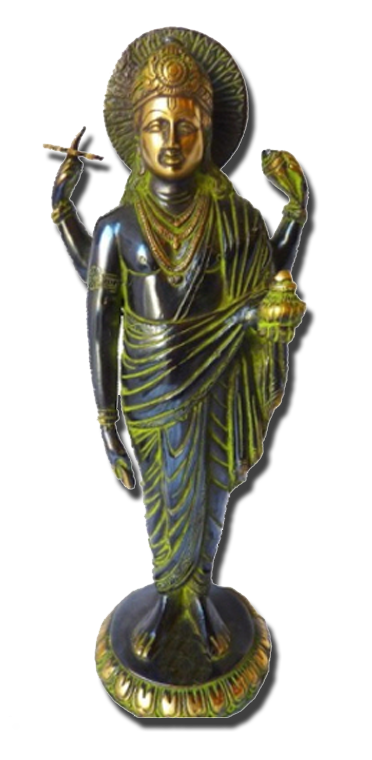|
|

Ayurveda is above all a global health approach, and much closer to better-being than well-being.
It is a natural way to recharge your batteries, eliminate all the toxic imbalances of your body and restore your defenses against disease and degeneration.
Ayurveda : the method. In Ayurveda, we do not really talk about diseases, but about health. In fact, diseases only occur when the immune system has had a weakness and has not protected us against microbial, viral or other aggression. Ayurveda will therefore do everything to maintain the individual in good health, ensuring first of all the balance of his doshas, but also by advocating good food, physical and mental behaviors which will protect him (purvakarma and panchakarma are the two keys for a deep detoxination) When a pathology is declared, the priority will be to give back to the body and the spirit all the energy of self-defense which is necessary to them, in particular by getting rid of them of what weakens them. Even if the word "medicine" exists in Ayurveda, it is not invested with all the powers that Western medicine confers on it. A medicine in Ayurveda is an ally for the patient to heal, to repair himself. It is not the medicine that heals, nor the doctor, it is the patient, with his own energies, and the valuable help of course of the doctor and the active properties of medicinal plants. These plants, moreover, have no targeted action on this or that pathology, but have multiple skills, and are most often associated only according to what the body needs, and this is the body of the patient, not a body stereotype. There is no standard here, everything is à la carte ... In summary: all treatment begins with a cleansing, then we restore the balance tridosha energetic, then we bring the necessary help for self-healing. It may take much longer than in Western medicine, but as the whole being is involved in healing, and the absorbed substances are all natural, there are no side effects. Ayurveda has excellent results in chronic diseases, in particular, but also as a restorative complement of allopathic medicine. Ayurveda : glamour trend?Our Germanic neighbors have discovered the benefits of Ayurvedic medicine, in India and Ceylon for more than twenty years, and have invested in the realization of extremely well-equipped and organized centers. As the number of visitors increased, the concept of relaxing tourism gradually replaced medical tourism, giving rise to less specialized medical centers, but seeking to be an alternative to SPA centers, spa treatments, balneotherapy, thalassotherapy. , aromatherapy, massages, etc ... often very pleasant and which can bring real relaxation and well-being. There are in these centers (resorts) amenities, comfort, a relational approach that differentiate them from some more medicalized but also more austere places, but I agree, they nevertheless retain a real value to achieve the happiness of being totally relaxed and comfortable. Some "touristico-ayurvedic" centers are often labeled "SPA AYURVEDA" but do not always have a qualified doctor "on board". They are not found only in India and Ceylon, and they regularly open new ones on every continent. (see our section The truth about the centers), accommodating the legal restrictions that often do not accept the medical role of Ayurveda. In traditional Ayurveda, men treat men, women treat women, not necessarily in a SPA; we prefer the monsoon and the mountain to the sea, the natural clothes (not synthetic), the vegetables exclusively, the ambient temperature (no AC), etc ... On the other hand the term SPA (sana per acqua) is used here for commercial purposes because in fact there is no treatment with water in Ayurveda. But I repeat, if a resort has an Ayurvedic SPA, it can be very pleasant, although it does not have the same remanence as if you were under a true Ayurvedic medical control, and it is important not to imagine following an ayurvedic cure. Another thing of importance: there is a fairly subtle notion to take into consideration is that the goal of Ayurvedic medicine is to optimize your ability to Life in all its aspects: bodily, mental and spiritual. It is a postulate that we accept or not ... The use of Ayurvedic therapies requires a real personal investment, readings, curiosity, a real project of better-being in his life, not only during the cure. Let's say it's a health and wellness investment, and it's worth living it to the full. Among the various tools available to Ayurveda therapists , there will be a certain hygiene of thought, but also of posture, breathing, letting go, etc ... hence the presence of yoga classes , meditation, etc... On a body level, depending on your energy profile (tridosha), you will be nourished with balancing substances internally (kashayams and tablets), by a custom-made diet, by herbal teas, and externally, by vegetable oils with plant essences which one will seek to make penetrate into your organism by all possible means. One of the well-known means is the Abhyangam, which from the outside looks like a massage; in fact it is an application method to penetrate active ingredients (quick and easy hands move over the entire elongated and oiled body, often performed with four hands), not a massage for the muscular system! With the birth of Ayurvedic tourism, abhyangam (which comes in shiro abhyangam, greeva abhyangam, kathi abhyangam, padha abhyangam, etc ...) is close to the idea we have about Indian massage, but the true abhyangam is what is described in the previous paragraph. This simple differentiation is useful to prepare the state of mind in which you will follow your cure: you will regenerate, put back in order what is unbalanced (perhaps without your knowledge) or repair what is broken. To learn more, you can read the excellent report from Wikipedia,
|
